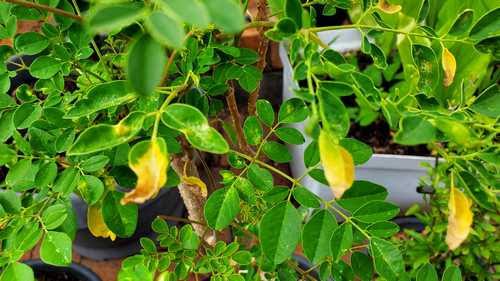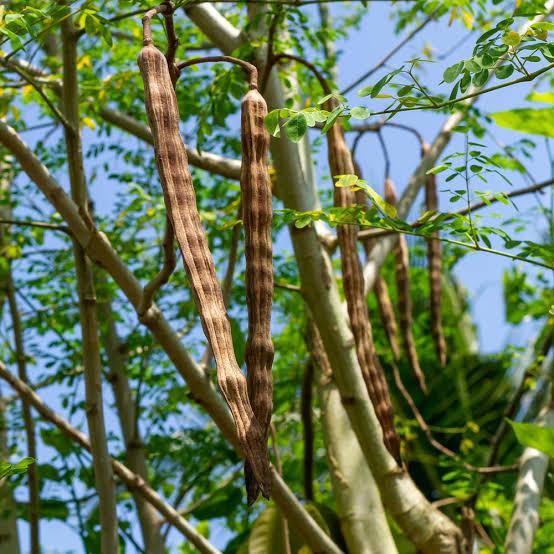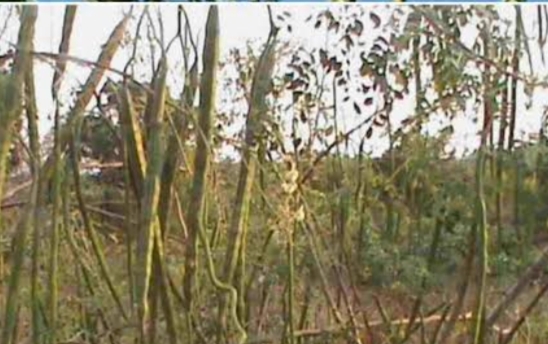Drumstick (Moringa) Plant
Moringa oleifera is a fast-growing, drought-resistant tree of the family Moringaceae, native to the Indian subcontinent and used extensively in South and Southeast Asia. Common names include moringa, drumstick tree, horseradish tree, or malunggay.
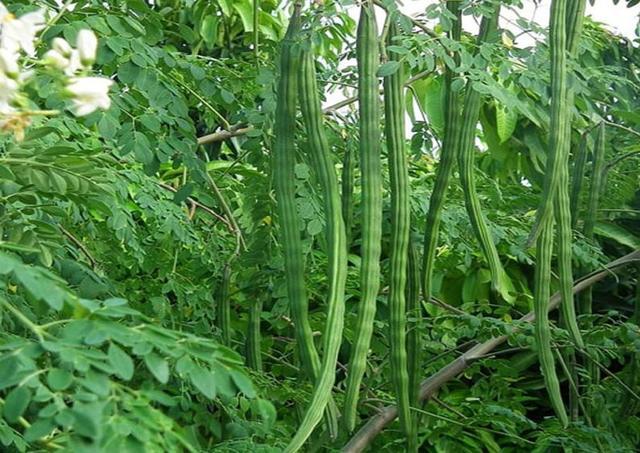
Habit
Tree
Height
6 to 12 m
Growth
Fast
Soil
Well-drained, sandy loam
Shade
Full Sun
Moisture
Moderate
Edible
Yes
Medicinal
Yes
Origin
India
Climatic Condition
Tropical, Arid
Temperature (°)
25 to 40
Humidity (%)
30 to 70 %
Potting media
Garden soil
Fertilizers
High nitrogen, organic mix
Watering
Moderate
Plant Weight
100-150 g
Flowering Time
Year-round
Soil Ph level
6.0 to 7.5
Water Ph level
6.5 to 7.5
Soil EC
0.5 to 1.5
Yield Per Plant
50-100 pods/tree
NPK ratio
10:10:10
life Span
20+ yrs
Health Benefits
Rich in vitamin C, boosts immunity, anti-inflammatory
Suggested Grow Media or Potting Mix ?
50% loamy soil, 30% compost, 20% sand
Suggested Fertigation/Fertilizers
Fertilize every 4 weeks with a balanced fertilizer.
Common Diseases and Remedies
Damping off, Brown Leaf Spot
Water Soaked spots on stems , Scattered brown spots on leaves
Plant at proper depth , Neem oil
What Is A Drum Stick Tree?
The drumstick plant, also known as Moringa oleifera, is a fast-growing tree native to the foothills of the Himalayas. It is prized for its edible parts, including its nutritious leaves and elongated seed pods called drumsticks. This plant is cultivated in many tropical and subtropical regions for its nutritional and medicinal properties.

What are the different types of drumstick plant?
1. Moringa oleifera:-
The most common type of drumstick plant, known for its nutritious leaves, flowers, and seed pods. It is commonly cultivated for medicinal and culinary purposes.
2. Moringa stenopetala:-
Also known as African Moringa, this species is native to East Africa and has many similarities to Moringa oleifera. It is highly valued for its nutritional content and is used in traditional medicine.
3. PKM-1:-
This is a special variety of Moringa oleifera known for its high yield and large pods. It is preferred by farmers because it is highly productive and adaptable to a variety of growing conditions.
4.ODC-3:-
Another variety of Moringa oleifera, ODC-3 is prized for its prolific production of pods and leaves. It is often chosen by farmers because of its stable yield.These are just a few examples of the different types of drumstick plants, each with its own characteristics and benefits.
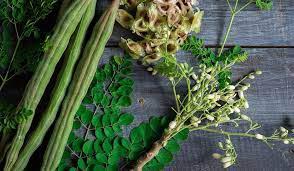
How to care for drumstick plant?
1. Location:
Drumstick plants like Moringa oleifera grow best in full sunlight. They require at least 6 to 8 hours of direct sunlight per day for optimal growth and production. Adequate sunlight is essential for photosynthesis, the process by which plants convert light energy into chemical energy to promote growth and development. In areas with insufficient sunlight, drumstick plants may become leggy, produce fewer leaves and flowers, and have a lower seed pod yield. Therefore, planting your drumstick plant in a sunny location will ensure that it receives the light it needs for healthy growth and a bountiful harvest.
2. Sunlight:
The plant necessitates an open, sunny location. It will not thrive under the shade of a tree or a structure.
3. Soil:
Lower leg plants like Moringa oleifera grow in well-drained soils that are rich in organic matter. The ideal soil for leg plants is sandy loam or loamy soil with a pH of 6.0 to 7.0. Good drainage is important to avoid water blockages that can lead to root rot and other problems.
4. Hydration:
Adequate hydration is very important for the health and vitality of lower limb plants like Moringa oleifera. These plants prefer regular watering, but can also tolerate drought once established. When first sowing drumstick seeds or seedlings, it is important to keep the soil evenly moist to support root formation. Water regularly, but be careful not to overwater as this can cause root rot. Once your drumstick plant is established, water it intensively but frequently. Allow about 1 inch of soil to dry between waterings. Water abundantly to encourage deep root growth and drought tolerance.

5. Nourishment :
Providing adequate nutrients through organic matter, fertilization, micronutrient supplementation, and proper watering can promote the health and productivity of drumstick plants, resulting in robust growth and foliage, Produces a rich harvest of flowers and seed pods.
6. Issues:
Drumstick plants like Moringa oleifera can face a variety of problems that affect their growth and health. Here we briefly discuss some common issues. Drumstick plants are susceptible to pests such as aphids, caterpillars, and whiteflies, which can damage the leaves and reduce yield. Regular monitoring and immediate treatment with insecticidal soap or neem oil can help control pest infestations. improper irrigation methods or Overwatering, which causes root rot, and under watering, which causes drought stress, can have negative effects on lower limb plants. Maintaining adequate soil moisture levels and adjusting watering frequency based on environmental conditions can help avoid these problems.
What are the benefits of Drumstick plants?
Drumstick plants, especially Moringa oleifera, offer many benefits due to their nutritional and medicinal properties. Here we briefly explain some of its main advantages. The drumstick plant is traditionally used to promote digestive health due to its fiber content and potential antibacterial properties. Eating drumstick leaves and pods can relieve constipation, support intestinal health, and prevent indigestion. Overall, the drumstick plant provides a wealth of health benefits and has become a valuable addition to diets and traditional medicine practices in many parts of the world.
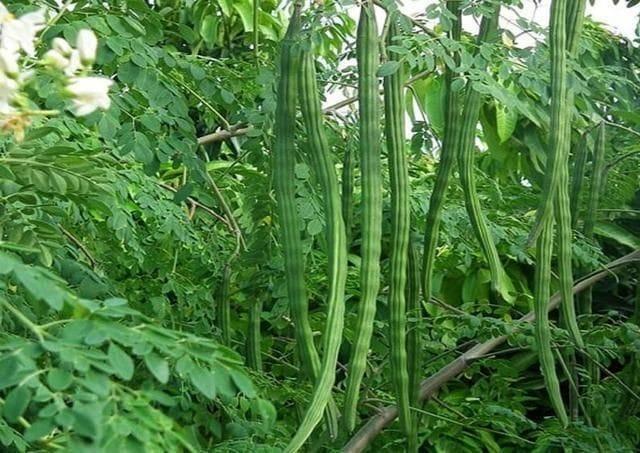
FAQs about growing drumstick plant
1.What are the nutritional benefits of drumstick plant?
The drumstick plant, particularly Moringa oleifera, offers a wide range of nutritional benefits due to its rich content of vitamins, minerals, antioxidants, and protein. Here are some of its key nutritional benefits:
Drumstick leaves, pods, and seeds are rich sources of various vitamins, including vitamin A, vitamin C, vitamin E, and several B vitamins. These vitamins play essential roles in immune function, vision health, skin health, and energy metabolism . Minerals: essential minerals such as calcium, potassium, iron, magnesium, and phosphorus. These minerals are crucial for bone health, muscle function, nerve function, and overall metabolic processes in the body , Antioxidants, Protein, Dietary fiber
2.What are the different parts of drumstick plant that are consumed and how are they used?
The drumstick plant, particularly Moringa oleifera, offers several edible parts that are consumed and used in various ways like leaves , pods , seeds etc
3.What are the ideal growing conditions for the drumstick plant?
The drumstick plant, also known as Moringa oleifera, thrives in warm, tropical climates with well-drained soil and plenty of sunlight. It prefers temperatures between 25-35°C (77-95°F) and requires minimal water once established. Well-drained sandy or loamy soil with a slightly acidic to neutral pH is ideal for its growth. Additionally, providing occasional fertilizer can promote healthy growth and abundant harvests of its nutritious pods.
4.How do you propagate and care for drumstick plant?
To propagate a drumstick plant, you can either use seeds or cuttings.
5.What are some culinary uses of the drumstick plant in various cultures?
The drumstick plant, scientifically known as Moringa oleifera, is utilized in various culinary traditions worldwide: In India, drumsticks are a common ingredient in various dishes, particularly in South Indian cuisine. They are added to sambar (a lentil-based vegetable stew), avial (a mixed vegetable curry), and korma (a creamy, mildly spiced curry).Drumsticks are used in Thai cuisine, particularly in dishes like gaeng som (sour curry), where they add a unique flavor to the dish. They are also used in stir-fries and soups.In the Philippines, drumsticks are often included in dishes like tinola, a chicken soup with ginger and vegetables. They are also used in sinigang, a sour soup typically made with pork or seafood. Across Africa, drumsticks are commonly used in traditional dishes. In Nigeria, for example, they are added to soups like egusi and ogbono. In Senegal, they are used in dishes like mafe, a peanut stew. In the Caribbean, drumsticks are utilized in various dishes, including soups, stews, and curries. They add flavor and texture to dishes like callaloo, a leafy green stew, and chicken curry.
